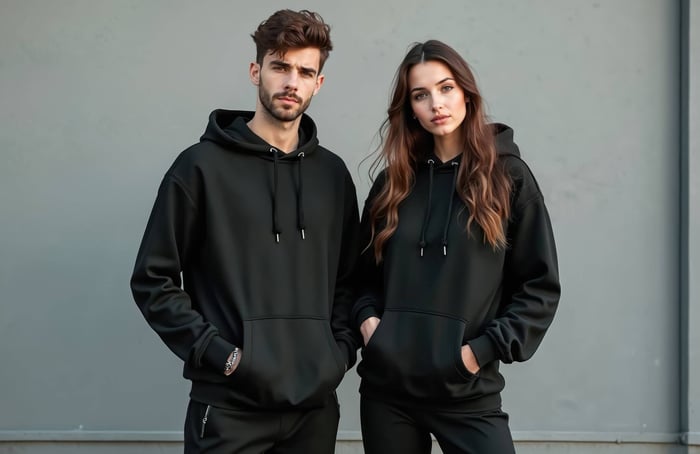 EcoBear Wear sustainable hoodie — premium minimalist streetwear from a non-fast fashion brand.
EcoBear Wear sustainable hoodie — premium minimalist streetwear from a non-fast fashion brand.Table of Contents
- Why Non Fast Fashion Brands Matter Right Now
- Affordable Non Fast Fashion Brands You’ll Actually Wear
- How to Shop Ethically on a Budget (Without Losing Your Aesthetic)
- Price‑Per‑Wear: The Math That Saves Money
- Spotting Greenwashing in the Wild
- Care, Repair, and Resale: Make Every Piece Go Further
- EcoBear Wear POV: Premium Minimalism, Zero Waste‑Of‑Space
- 7 Days, 7 Fits: Minimalist Streetwear Capsule in Action
- Closet Audit Checklist (Before You Buy Anything New)
- Quick Brand Notes: What to Try First
- Budget-Friendly Capsule Wardrobe Under $250
- Best Practices for Ethical Shopping (Buy Less, Buy Better)
- How to Spot Greenwashing (Red Flags to Watch)
- Certifications, Simplified
- Tools & Communities to Level Up Your Research
- Care & Repair Deep Dive: Make Clothes Last Longer
- Resale, Rental, and Swaps
- Shipping, Returns, and Emissions
- Fit Longevity: Buying for Movement
- Budget Planner: The 3‑2‑1 Rule
- Common Myths, Debunked
- Your Move: Build the Closet You’ll Actually Wear
- Conclusion: Your Impact on the Fashion Industry
- FAQs
Gen Z is done with flimsy fits that fall apart after three washes. Across TikTok, Instagram, and IRL campus life, the vibe is shifting toward non fast fashion brands that feel better, last longer, and align with real values. We want clothes with receipts—clear sourcing, fair labor, and materials that respect the planet—without losing that clean, minimalist, premium streetwear look. That’s exactly where EcoBear Wear lives: sustainable staples designed to outlast trends and keep your rotation tight. EcoBear Wear stands out among non fast fashion brands for its premium minimalist streetwear designed to last for years, not just seasons.
In this guide we’ll break down why choosing the best non fast fashion brands actually matters, how to shop them affordably, and how to build a capsule that hits different—zero greenwashing, maximum wearability. Use this as a starter map: save it, share it, and come back whenever your closet needs a reset.
Why Non Fast Fashion Brands Matter Right Now
Fast fashion’s business model is built on speed and volume: churn out micro‑trends, cut corners on labor and materials, and drive impulse buys that get tossed a few months later. That loop fuels overproduction, textile waste, and burnout—for the planet and for people. Non fast fashion brands flip that script with slower drops, living wages, traceable supply chains, and quality you can actually feel. You buy less, wear more, and your style story becomes about curation instead of constant replacement.
Here’s what you’re voting for when you support independent fashion labels and clothing brands that are not fast fashion:
Fair pay & safe conditions — prioritizing worker well‑being from farm to cutting table to factory floor.
Responsible materials — organic cotton, recycled fibers, TENCEL™ Lyocell, and low‑impact dyes that protect waterways.
Design for longevity — tighter knit structures, reinforced seams, and timeless silhouettes that stay in rotation for years.
Smaller, smarter runs — limited production to avoid deadstock and landfill.
Radical transparency — cost breakdowns, supplier lists, and third‑party ratings you can verify.
This is bigger than fashion. When you invest in the best non fast fashion brands, you invest in skills, time, and craft. You also get better fits: heavier GSM hoodies that don’t torque in the wash, tees that hold shape, and joggers that keep that clean drape. From a climate lens, smaller collections and durable builds reduce the footprint per wear. From a personal lens, a tighter closet means less decision fatigue and more confidence—your outfits become a highlight reel, not a landfill pipeline.
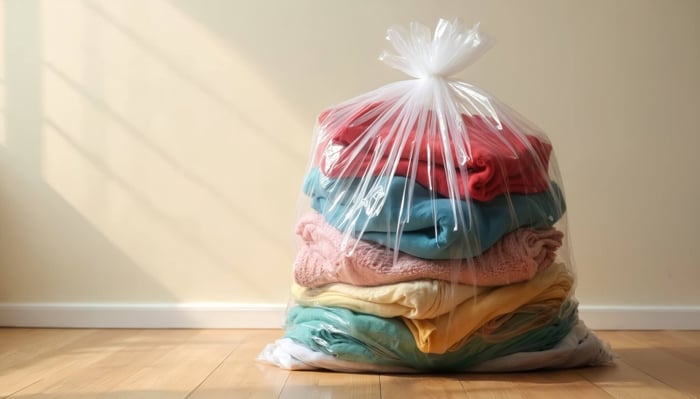 Impact comparison: fast fashion vs. non-fast fashion brands — why slower, better production wins.
Impact comparison: fast fashion vs. non-fast fashion brands — why slower, better production wins.The Real Cost of Throwaway Clothes
Every $10 tee that falls apart pushes you toward the next $10 tee. That replacement cycle is the cost trap. Non fast fashion labels ask a different question: what if you buy once and wear 100+ times? Cost‑per‑wear beats sticker price every time. That’s why we build EcoBear Wear pieces with dense knits, soft yet strong TENCEL™ blends, and construction details—like cover‑stitching and bar‑tacks—that quietly add years to the garment.
Materials That Matter (And Feel Better)
Look for fibers that respect the planet and your skin. Organic cotton avoids harmful pesticides. TENCEL™ Lyocell is made in a closed‑loop process, giving a soft, breathable handfeel with lower impact. Recycled polyester keeps bottles out of landfills and adds durability to performance layers. The point isn’t perfection; it’s progress—and choosing fabrics that make comfort and responsibility the default.
Transparency You Can Check
The best non fast fashion brands don’t ask for blind trust. They share factory partners, certifications, and cost breakdowns. Browse brand ‘About’ pages, sustainability reports, and third‑party directories for receipts. If details are vague, that’s your sign to pause. With EcoBear Wear, we publish material specs and production notes so you know what you’re wearing—and why it lasts.
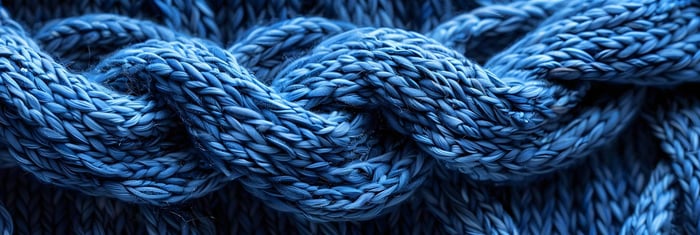 Detail view: dense knit and reinforced seams for lasting quality in non-fast fashion hoodies.
Detail view: dense knit and reinforced seams for lasting quality in non-fast fashion hoodies.Affordable Non Fast Fashion Brands You’ll Actually Wear
Ethical doesn’t have to equal expensive. You can build a clean, minimal wardrobe on a student budget by mixing thrift, smart brand picks, and intentional care. Below is a starter list of affordable or fair‑priced labels—a blend of independent fashion labels and well‑rated basics—plus how to style them for a premium streetwear vibe.
Yes Friends — Entry‑price tees and hoodies made with Fairtrade organic cotton. Clean cuts, easy to layer.
Pact — Organic cotton essentials and loungewear with frequent sales; great for base layers.
Colorful Standard — Heavyweight basics with bold or neutral palettes; dyeing done with lower‑impact processes.
Kotn — Ethically made cotton staples with modern tailoring; strong option for tees and sweats.
tentree — Casual basics using recycled fibers; plants ten trees per item; outdoors‑meets‑street vibe.
Organic Basics — Minimal underwear and basics using organic and recycled materials; less but better.
Girlfriend Collective — Recycled materials, inclusive sizing; solid for athletic fits and everyday athleisure.
Boody — Bamboo‑based basics with a soft handfeel; good for socks, tees, and underwear.
Everlane — Cost transparency and solid entry‑level denim/knits; watch for the best‑value drops.
Finisterre — Cold‑weather layers built to last; mix technical function with understated design.
KnowledgeCotton Apparel — Scandi minimalism, organic fabrics, clean graphics; strong casual selection.
Veja (footwear) — Iconic minimal sneakers using responsibly sourced materials; easy way to elevate fits.
Nisolo (footwear) — Ethically made leather sneakers and boots; versatile with premium streetwear outfits.
EcoBear Wear — Sustainable, minimalist streetwear designed for longevity—hoodies, pants, tees that tie a capsule together.
Heads up: prices vary by region and season. Subscribe to brand newsletters, watch end‑of‑season sales, and prioritize pieces that anchor multiple outfits. A heavyweight hoodie, tapered jogger, and a rotation of two tees can carry a week’s worth of fits with minimal effort.
How to Shop Ethically on a Budget (Without Losing Your Aesthetic)
Start with a capsule mindset: pick a tight color palette (charcoal, forest, sand) and silhouettes that layer well. Then build intentionally:
- One premium hoodie (heavy GSM, double‑stitched).
- One pair of joggers that taper clean at the ankle.
- Two tees—one relaxed, one fitted.
- A versatile overshirt for structure.
- One pair of minimal sneakers (Veja, Cariuma, or your go‑to).
This five‑piece core multiplies into dozens of outfits. Swap colors seasonally and add one statement layer when budget allows.
Price‑Per‑Wear: The Math That Saves Money
If a $30 hoodie lasts 10 wears, your cost per wear is $3. If a $120 hoodie lasts 200 wears, cost per wear drops to $0.60. Even before you factor in comfort, fit, and ethics, longevity wins. That’s why we obsess over fabric density, seam strength, and pre‑shrink finishes—so your EcoBear Wear pieces clock hundreds of wears without fading into ‘house clothes.’
Spotting Greenwashing in the Wild
Buzzwords without data are a red flag. Look for specifics: fabric percentages, certification names, supplier transparency, repair or take‑back programs. If a brand talks ‘eco’ but drops weekly micro‑collections, be skeptical. Non fast fashion brands typically release fewer, stronger capsules, then restock hero pieces you actually wear.
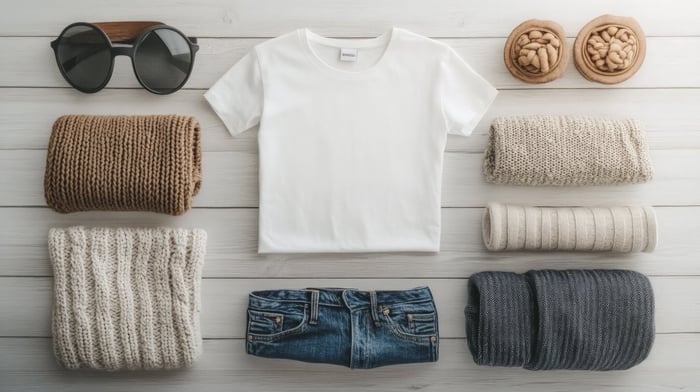 Capsule wardrobe example: affordable non-fast fashion pieces styled for a clean, minimalist streetwear look.
Capsule wardrobe example: affordable non-fast fashion pieces styled for a clean, minimalist streetwear look.Care, Repair, and Resale: Make Every Piece Go Further
Extend the life of your clothes and your budget stretches automatically. Wash cold, air dry when possible, and store knits folded. Learn simple mends—re‑sewing a seam or replacing a drawcord takes minutes and adds years. When a piece no longer fits your style, resell or swap it. Circular habits are the most affordable sustainability hack.
EcoBear Wear POV: Premium Minimalism, Zero Waste‑Of‑Space
We design with a ‘no filler’ policy: fewer pieces, higher quality, maximum versatility. Our hoodies use dense, buttery‑soft blends that resist pilling and keep structure; joggers taper clean without clinging; tees land between drape and durability so they work solo or under layers. Each drop is small, traceable, and tuned for longevity. The goal isn’t to own more—it's to own better.
Bottom line: building an affordable, ethical, and aesthetically consistent wardrobe is absolutely possible. Anchor your closet with non fast fashion brands, mix in secondhand scores, and take good care of what you choose. You’ll feel the difference every time you get dressed—and your closet will finally match your values.
7 Days, 7 Fits: Minimalist Streetwear Capsule in Action
MON: Hoodie + tapered joggers + minimal sneakers. Keep it monochrome for that clean silhouette; add a beanie for texture.
TUE: Relaxed tee under an overshirt, cuffed chinos, and low‑tops. Layer a chain for a subtle elevate.
WED: Hoodie under a lightweight puffer with straight‑leg denim. Functional, warm, and still streamlined.
THU: Fitted tee with pleated trousers and sneakers—soft tailoring meets streetwear for class or casual office.
FRI: Overshirt zipped up like a jacket with joggers; swap to high‑tops for a skate‑adjacent vibe.
SAT: Graphic tee from an independent fashion label, wide‑leg pants, and a cap—weekend energy without effort.
SUN: Cozy set day—hoodie + shorts, ankle socks, and slides. Add crew socks and a tote for a coffee run.
Closet Audit Checklist (Before You Buy Anything New)
- Pull everything you wore in the last 30 days—these are your real‑life staples.
- Identify duplicates that don’t spark joy or fit well; list them for resale.
- Note gaps: do you need a mid‑layer, a heavier hoodie, or better tees?
- Align colors to a three‑tone palette for mix‑and‑match ease.
- Set a monthly budget and track cost‑per‑wear for big items.
- Commit to a one‑in, one‑out policy to keep clutter from creeping back.
Quick Brand Notes: What to Try First
Yes Friends: start with the tee; it’s the budget friendly win. Pact: grab a 2‑pack of organic tees or underwear—great daily drivers. Kotn: their tees and sweatshirts land that premium‑but‑quiet look. tentree: look to fleeces and basics for travel or campus. EcoBear Wear: begin with our hoodie; the dense knit and minimalist branding make it a forever piece.
Budget-Friendly Capsule Wardrobe Under $250
Under-$250 Starter Capsule (Mix, Match, Repeat)
- Heavyweight hoodie in charcoal or forest (anchor layer).
- Tapered joggers with a clean cuff (commuter‑friendly).
- Two tees—one relaxed, one standard fit (white + sand).
- Minimal sneakers you already own.
Rotate the hoodie as outerwear or mid‑layer, swap tee fits to change proportions, and you’ve got a week of outfits without looking same‑same.
Cost‑Per‑Wear Math (Why Quality Saves You Money)
If a $120 hoodie lasts 200 wears, cost per wear is $0.60. A $35 hoodie that twists, pills, and retires at 15 wears costs $2.33 per wear. Better fabric, construction, and care routines make the affordable choice the durable choice.
Best Practices for Ethical Shopping (Buy Less, Buy Better)
Finding clothing brands that are not fast fashion is step one. Step two is how you shop. These best practices keep your closet tight, your style consistent, and your footprint low.
Plan your palette — Pick three core tones (charcoal, deep green, sand) so everything layers clean.
Run the 30‑wear rule — If you can’t picture 30 wears, it’s not capsule‑worthy.
Audit fabric first — Look for organic cotton, recycled fibers, or TENCEL™ Lyocell; avoid flimsy, see‑through knits.
Check transparency — Seek supplier lists, certifications, and repair/take‑back programs.
Size and silhouette — Buy for how you move. Slightly relaxed fits usually extend garment life.
Care to keep — Wash cold, air dry, sharpen a fabric shaver, and learn basic mending.
Buy secondhand to supplement — Thrift outer layers, then invest new in high‑rotation basics.
Time your buys — End‑of‑season and archive sales are your friend; set alerts and stay patient.
Support independent fashion labels — Small runs, thoughtful design, and fewer micro‑trends equal longer relevance.
Track cost‑per‑wear — A simple note in your phone will change how you shop forever.
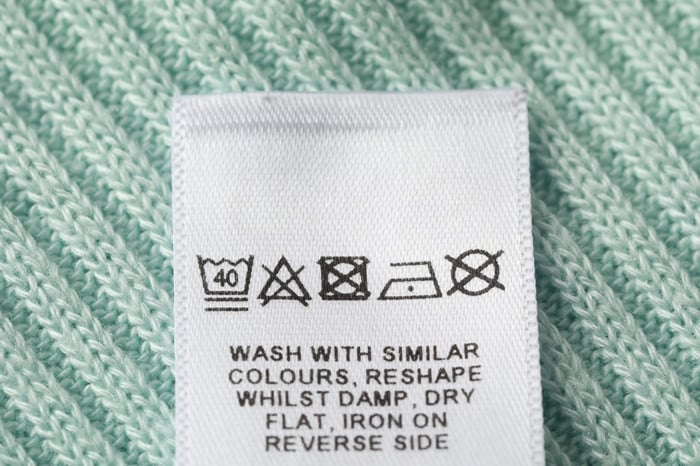 Clothing care kit: easy tools to maintain the quality and longevity of non-fast fashion pieces.
Clothing care kit: easy tools to maintain the quality and longevity of non-fast fashion pieces.How to Spot Greenwashing (Red Flags to Watch)
Beware of vague terms like “conscious” or “eco” with zero specifics. Real receipts look like fiber percentages, certification names, supplier details, and programs that take back or repair products. If a brand drops new micro‑collections every week, that’s the fast fashion playbook—no matter the tagline.
Certifications, Simplified
- GOTS — Strong standard for organic fibers and processing.
- FSC — Wood‑based fibers (like TENCEL™) sourced from responsibly managed forests.
- Fairtrade — Focus on fair wages and working conditions.
- B Corp — Broader accountability across social and environmental metrics.
Use certifications as signals, not a shortcut for thinking—pair them with brand transparency.
Tools & Communities to Level Up Your Research
Check brand profiles and ratings on directories like Good On You or Eco‑Stylist, read deep dives from sites such as Fast Company and The Good Trade, and browse Reddit threads in r/ethicalfashion or r/sustainability for lived experiences. Crowd wisdom will flag fit issues, durability wins, and which ‘sustainable drops’ actually hold up.
How to Make Your Clothes Last: The Gen Z Guide to Non Fast Fashion Longevity
Care & Repair Deep Dive: Make Clothes Last Longer
Longevity is sustainability’s quiet superpower. Wash on cold with mild detergent; heat degrades elastic and accelerates fading. Air drying preserves shape and reduces energy use. Hit pills with a fabric shaver and lint with a clothes brush. Learn two ten‑minute fixes: re‑sew a loose seam and replace a drawcord. Keep a tiny kit—needles, thread, spare buttons, a patch, and a safety pin—in your bathroom drawer. If stitching intimidates you, many dry cleaners offer simple repairs for a few dollars.
Resale, Rental, and Swaps
When your style evolves, keep pieces in motion. List quality items on peer marketplaces, trade within your friend circle, or rent special‑occasion fits instead of buying new. Some brands run official resale (Patagonia Worn Wear, for example); independent fashion labels sometimes host archive sales or community swap days. Circular habits keep great garments alive and budgets sane.
Shipping, Returns, and Emissions
Batch orders to cut deliveries, opt for slower shipping when possible, and read sizing charts to avoid return churn. If a brand discloses packaging details, prioritize recycled/recyclable materials. Reuse mailers for your own resales—easy win.
Fit Longevity: Buying for Movement
Pieces last longer when the fit matches your real life. If you bike or lift, a slightly relaxed shoulder and rise will reduce seam stress. Look for gussets, bar‑tacks, and double‑needle stitching at stress points. Heavier GSM doesn’t always mean better, but it often correlates with durability; pair density with softness so you actually reach for the piece.
Budget Planner: The 3‑2‑1 Rule
Each quarter, budget for 3 essentials (tees/socks/underwear), 2 core layers (hoodie or overshirt), and 1 statement upgrade (jacket or footwear). Track cost‑per‑wear in Notes or a spreadsheet. If an item sits under five wears in two months, resell it and reassess your palette.
Common Myths, Debunked
Myth: Ethical = expensive. Reality: price‑per‑wear flips the script.
Myth: All small brands are ethical. Reality: look for transparency and materials, not just vibe.
Myth: Certifications guarantee perfection. Reality: they’re helpful signals, not a pass to stop asking questions.
Your Move: Build the Closet You’ll Actually Wear
Start where impact meets frequency: upgrade your most‑worn piece first. For most of us, that’s a hoodie or tee. EcoBear Wear’s Terra‑weight hoodie is engineered for the long haul—dense knit, reinforced seams, and a minimalist design that stays in play. Swap one high‑use item, track wears for a month, and feel the difference in comfort and confidence. Then repeat. One considered purchase at a time is how closets change—and industries follow.
Conclusion: Your Impact on the Fashion Industry
Every cart is a vote. When you choose from the best non fast fashion brands, you tell the industry that speed and waste aren’t the flex—longevity and responsibility are. Demand for better materials increases, transparency becomes table stakes, and garment workers benefit from safer, fairer conditions. Trends will always come and go, but your values shouldn’t have to.
At EcoBear Wear, we design for repeat wears and repeat compliments: dense knits that resist pilling, stitching that holds, and silhouettes that play nice with everything you already own. Our promise is simple—no filler pieces, just premium, minimalist streetwear that moves with you for years. Whether you’re starting with a single hoodie or re‑building your whole rotation, switching to clothing brands that are not fast fashion is one of the most practical climate actions you can take.
Ready to upgrade your wardrobe without the waste? Start with your most‑worn piece—probably a hoodie or tee—and replace it with a non fast fashion version you’ll wear 100+ times. Then repeat, slowly. That’s how closets (and industries) change.
FAQs
Is ethical fashion actually affordable for students?
Yes—when you buy less, shop sales, and calculate cost‑per‑wear. Invest in high‑rotation basics and supplement with thrift.
How many pieces do I need to start?
Five to eight well‑chosen items can create dozens of outfits. Focus on fit, fabric, and palette first.Five to eight well‑chosen items can create dozens of outfits. Focus on fit, fabric, and palette first.
What if a brand is transparent but pricey?
Buy secondhand from that brand, wait for archive sales, or start with their most versatile piece to maximize wear.Buy secondhand from that brand, wait for archive sales, or start with their most versatile piece to maximize wear.Buy secondhand from that brand, wait for archive sales, or start with their most versatile piece to maximize wear.
What certifications should I look for?
GOTS for organic fibers, FSC for wood‑based fibers like TENCEL™, and Fairtrade or B‑Corp for broader social and environmental standards.
Does buying locally really matter?
Local or regional production can reduce transport emissions and increase accountability. It also supports nearby makers and economies.
